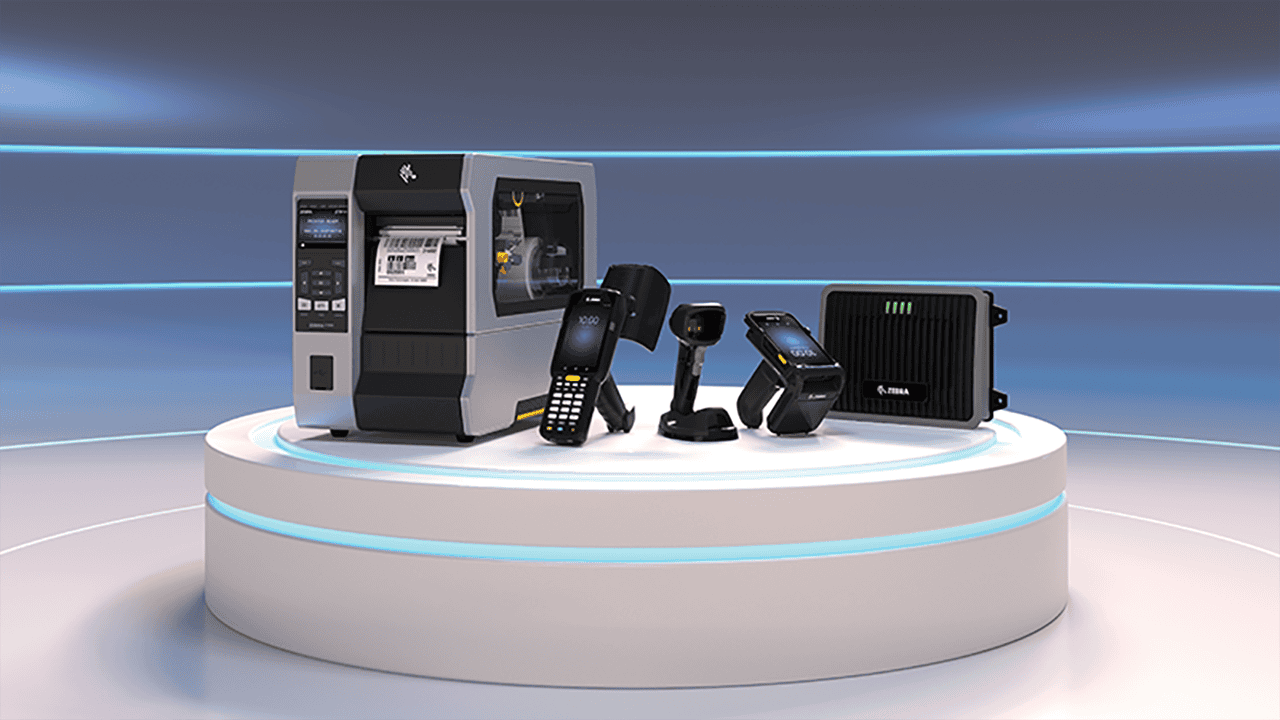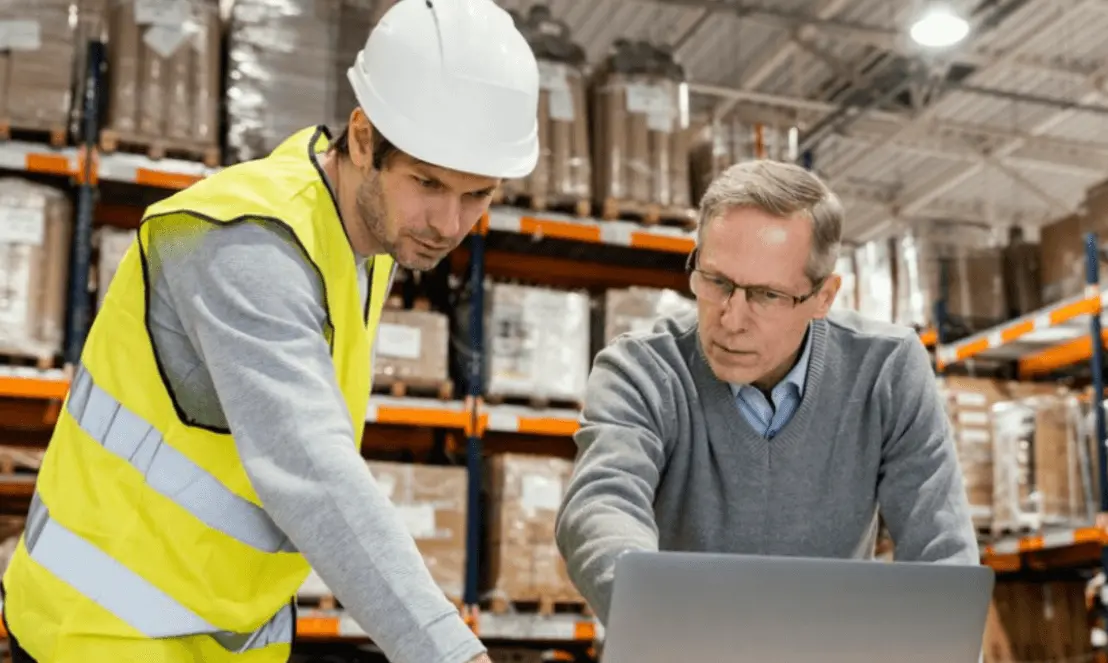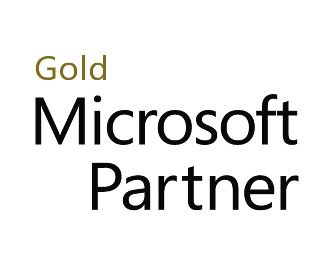Partner Blog
by: Mark Wheeler / Zebra
BUSINESSES OF ALL SIZES CAN BENEFIT FROM SENSOR-BASED DATA CAPTURE SOLUTIONS SUCH AS PASSIVE RFID AND BLUETOOTH® LOW ENERGY BEACONS AS THEY START TO BUILD “SYSTEMS OF REALITY.”
If you’ve been following along with the Zebra Warehouse Maturity Model blog series, you’ll recall that Phase One was focused on improving individual worker productivity in order to gain basic control of business operations, and Phase Two was all about achieving greater team productivity and workflow conformity by optimizing the use of mobility. Now, as we move into Phase Three, we start to implement sensor-driven technologies that expand your operational visibility into targeted areas that currently lack visibility and may be causing congestion, errors or inefficiencies.
More specifically, in this phase, you can expect to gain greater visibility of assets, such as inventory, and material handling equipment, such as lift trucks, hand jacks and pick carts. With that visibility comes the benefit of greater equipment utilization because you will now know exactly where each asset is located. You will know exactly who to call when you need a cart or where to go to pick up the equipment closest to your current location.
WHAT YOU SHOULD BE LOOKING TO ACHIEVE IN PHASE THREE
Now that you have solid “systems of record” in place thanks to the well-integrated mobile computing, wearable, scanning and printing solutions you’ve implemented at the warehouse edge thus far, it’s time to begin evolving and fine tuning your technology architecture to include “systems of reality” that enable you to see even more of what’s happening within your four walls.
In conjunction with your routine data capture and analytics tools, you will begin to leverage more targeted automated data capture and analytics solutions that help automate operational decisions and enable front-line workers to act in real time to solve the most urgent and important issues.
Why are such automated technologies necessary?
There are many things that people may forget to report in the hustle and bustle of the day, and there are many things that are simply too laborious to capture manually using transactional methods on a mobile device. For example, it’s not feasible to have a worker stand in a trailer with a mobile computer or tablet to record or live-stream video so that logistics managers can see what’s happening inside a trailer as it’s being loaded. And asking workers to stop every few minutes to report loading progress wastes time. Yet you still need a way to “see” if your trailers are leaving the dock with more air than parcels or pallets.
That’s what Phase Three technology investments are all about: gaining the real-time operational visibility and, therefore, the actionable insights needed to improve processes that impact asset utilization as issues or opportunities are identified – not after it’s too late to do anything about them.
That being said, it’s critical to set realistic goals, especially given the volatility of today’s market (and world, as a whole.)
You don’t necessarily have to deploy wall-to-wall “always on” real-time location systems in order to gain greater visibility of your assets. At least not yet. You can jump to these types of solutions if you feel that’s the best next step for your business and you have the resources to commit to such a deployment. And the Zebra team will most certainly work with you to assess if that’s the best strategy for you right now.
However, sensor-based solutions that only “turn on” to emit a signal when a reader is within range can be quite effective and make a big difference in productivity. This is especially true when utilized for a targeted purpose where you currently lack visibility and require an increased level of accuracy, like reconciling advance ship notices (ASNs), returns management, optimizing picking operations or load compliance. Plus, automated data capture solutions can be far more cost-effective than full-scale RTLS, making them surprisingly accessible to small and mid-sized businesses (SMB).
Given that smaller warehouse operators are under the same intense pressure as their large enterprise-scale competitors to fulfill orders accurately and on time, any technology that can help level the playing field will yield a significant return on investment (ROI). Customers don’t care about the size of your workforce or how much revenue you generate each year. They just want to know that they can trust you to fulfill their order on time and without issue.
Therefore, all warehouse operators need to be thinking about how they can feasibly implement automated sensing and data capture technologies such as RAIN RFID solutions, Bluetooth® Low Energy beacons, RGB cameras, intelligent 3D-sensor technology and computer vision-based platforms in order to keep up with both customers and competitors.
HOW TO GET STARTED WITH SENSING-BASED TECHNOLOGIES
Warehouse maturation is a journey that will prove most fulfilling if you commit to small, strategic self-improvement efforts. Identify processes where you lack visibility now and where even a little more visibility could make a big impact on your business. For example, the loading dock is an area of the warehouse that is many times overlooked even though more visibility could drive both greater efficiencies and cost savings. Think about it:
- You need to know if your trailers are packed to the highest capacity, yet I’m sure you don’t have x-ray vision or time to stand at each dock door to watch each load. But having trailers leave with excess “air” inside the trailer is neither profitable nor environmentally friendly, so you need a way to confirm proper utilization while loading is in progress.
- You (and your entire supply chain) must execute a highly-optimized just-in-time operation. But can you predict when a trailer—or twenty trailers—are going to be ready to close so you can notify yard management? Unless you have a crystal ball, you are probably out of luck and will continue to lose time as trailers wait in the yard for their call once a dock door is clear.
That is why technology solutions such as Zebra SmartPack™ Trailer and SmartPack Container are being increasingly requested by warehousing, transportation and logistics organizations. They utilize 3D-sensor technology and RGB cameras that work together along with scanned transactional data capture of parcel or pallet barcodes to calculate load density, trailer or container fullness, load quality, wall-by-wall build profiles and images of loads in progress on a single dashboard for multiple dock doors. The error-prone guesstimates are eliminated from the equation, automatically making dock operations become more efficient and enabling shippers to move more product without needing more trailers or containers.
Of course, it is also important in Phase Three to prioritize technology investments that address specific productivity and accuracy gaps in your current transactional mobility strategy. While your human-initiated, scan-based data capture approach is good for most processes, there are likely some functional areas where your current methods are neither fast enough nor accurate enough to meet the business needs. Employing sensor-driven, real-time data capture and analysis tools is a great way to start “managing by exception” to reduce delays and congestion and ensure the best use of your staff, especially in an area such as receiving.
If you’re in a position to request (and enforce) supplier RFID tagging of inbound materials, you can deploy fixed RFID readers in receiving portals to record incoming inventory in the warehouse management system (WMS) or enterprise resource planning (ERP) system as it is unloaded in an accurate one-touch or even no-touch receipt workflow. The captured data can be automatically compared to ASNs on the back end so that receiving teams don’t have to manually scan every carton or pallet that comes in. They will only intervene when an exception occurs, which frees them up to unload and put away inventory more quickly or ensure any urgent customer-related issues are resolved. Deployment of this type of “system of reality” will almost instantly enable:
- Inbound inventory to be received more accurately and allocated faster to customer orders.
- You (and your vendor partners) to verify the receipt of goods in real time.
- Granular data about regulated items to be automatically recorded in order to initiate or preserve supply chain track and trace actions, whether managed via blockchain, digital ledger technology (DLT) or some other “system of truth.”
- Receiving staff to use their time more wisely and manage by exception, rather than scanning every carton. They can devote their time to customer-related activities like ensuring urgent orders have been allocated their inventory.
- Accountability for movement of goods. Lift-truck activity can be recorded as pallets are removed from trailers, allowing for easy inventory tracking.
Alternatively, you could implement Bluetooth Low Energy beacons for location awareness with low complexity. Bluetooth Low Energy beacons that can withstand harsh environments can be placed in trailers and used in conjunction with the Bluetooth sensor in workers’ mobile computing devices to verify manual trailer load-out accuracy and reduce expensive misloads. There are beacons that can provide a location in less than a second, and they work quite effectively within the close confines of modern warehouses and distribution centers where dock doors are only separated by a couple feet. Of course, the key is to ensuring that you’re using the right software solution in conjunction with these beacons. (If you need help determining the right software-hardware combination for your environment, our team is just an email or phone call away.)
WANT A BETTER A “SENSE” OF WORKER COMPLIANCE AND ASSET PERFORMANCE?
Even a single instance of policy or procedure non-compliance can be detrimental to your business and bottom line. Fortunately, solutions such as RAIN RFID and Bluetooth Low Energy give you the insight needed to validate and correct critical workflow compliance points in real time. Assets such as goods, pick carts, lift trucks, pallets, rack locations can be associated, tracked throughout the facility, and disassociated when a task has been completed. Alerts can be sent to immediately notify a worker that a task was completed correctly or that there is an error and it needs to be corrected.
For example, you could install a fixed RFID reader in a portal area to track the movement of forklifts as they drive through to pick up work-in-process (WIP) goods from the manufacturing plant and move finished goods to either a storage or shipping location, such as the warehouse or the loading dock. This will provide updated inventory status in real time so that your teams and supply chain partners can plan for subsequent actions accordingly or address an issue before it escalates further. And, should finished goods be placed in the incorrect rack location and need to be moved, you (and your floor team) will know right away a) that there is an issue and b) how to fix it.
At the same time, sensor-based solutions such as MotionWorks Proximity are becoming essential to sustaining a safe work environment amidst the ongoing COVID-19 pandemic. As Jennifer Springer explained in this blog post, organizations of all sizes are under pressure to ensure compliance with company and government-imposed social distancing policies right now. Yet, employees need to remain focused on the task at hand, not how many feet separate them from colleagues.
What we found in our own research and testing here at Zebra is that, a combination of Bluetooth, Wi-Fi and mobile technologies could effectively and accurately monitor the distance and time spent between employees during the course of the day and, when needed, audibly “warn employees when they’re too close to one another so that they can safely separate.” Such a combination could also help organizations “securely record proximity events for later reference if needed for targeted and automated contact tracing… without violating employee’s privacy rights.” If you don’t have such a solution in place today, I highly recommend you check it out. Most likely, it will require very little financial or resource commitment to rollout.
Something else that is often overlooked – but just as critical to business outcomes – is technology fleet performance. You need to know the “health” of every handheld mobile computer, tablet, scanner, vehicle mounted computer, wearable and printer in use across your operations 24/7/365. A single point of failure or lost device can cause a ripple effect. Hours could be wasted searching for a misplaced device, and entire workflows could be halted if just one person has to stop and replace a battery.
Therefore, you need to equally invest in solutions that give you greater visibility into your IT infrastructure – specifically device location, usage and status – and greater remote manageability. Even before the COVID-19 outbreak, it wasn’t necessarily feasible or cost-effective to have someone on site around the clock to monitor, secure, troubleshoot and update devices. Now, with strict social distancing measures in place, it has become even more important to increase front-line workers’ self-sufficiency and expand IT team’s virtual intervention capabilities. I would recommend, at the very least, implementing tools such as Printer Profile Manager Enterprise and Zebra VisibilityIQ™ DNA which give you a more centralized way to see and manage all deployed assets at once, from a single location anywhere in the world.
IN SUMMARY
In Phase Three of your warehouse maturation journey, the focus should be on increasing operational visibility in order to improve asset utilization. When you know the location, condition, content and performance of people, inventory and equipment, you can better allocate resources, begin to automate tasks and more effectively plan and execute highly-coordinated workflows using real-time, data-driven insights. The resulting business efficiencies will enable you to achieve growth goals or – at the very least – sustain operations in volatile times, such as what we’re experiencing during the COVID-19 pandemic.








